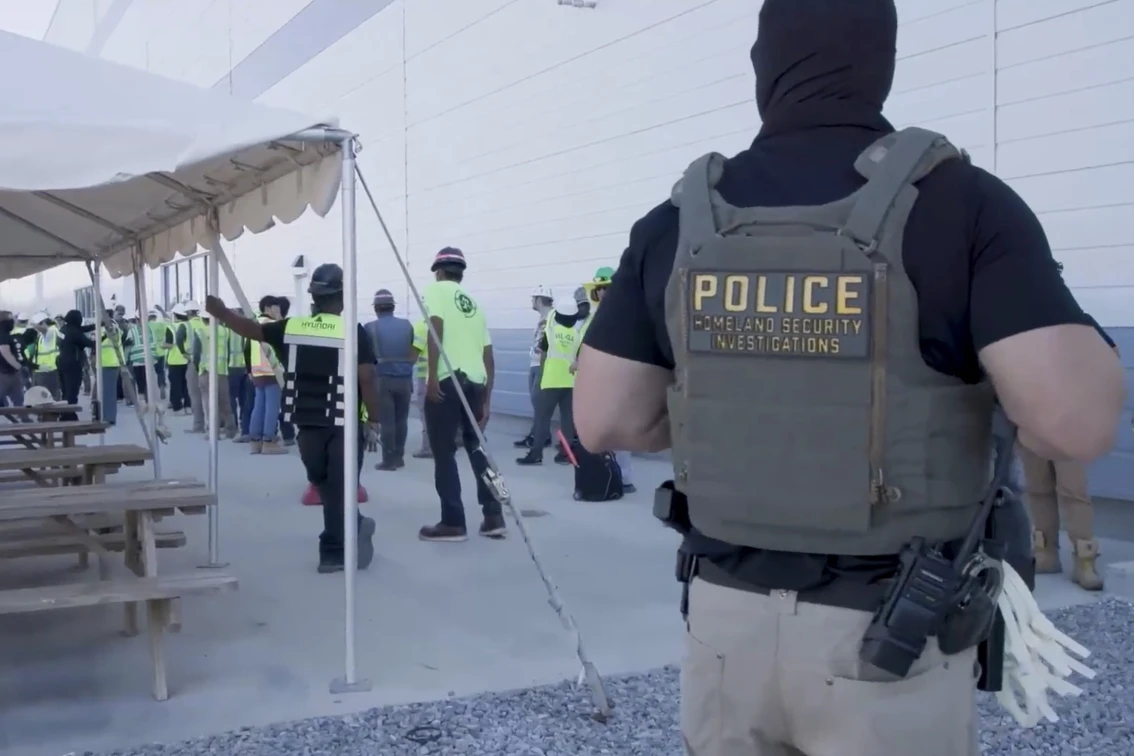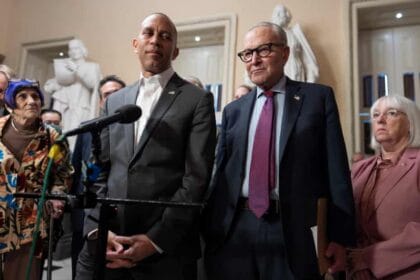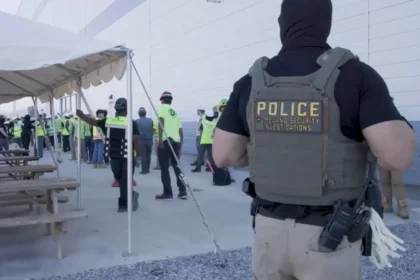By Brian Ochieng Akoko, Reporter | Nakuru City – Kenya.
Washington, D.C., September 25, 2025 — A new report is making headlines. It comes from the Congressional Budget Office (CBO). The CBO is a nonpartisan group. Its new report gives a stark economic warning. It links a proposed policy to national economic health.
The policy is mass deportation. The CBO says mass deportations will harm the U.S. economy. It predicts a decline in the U.S. population. It also forecasts a smaller labor force. This would happen over the next decade.
The report’s findings are very detailed. They are also very significant. They add new weight to a national debate. This debate has been going on for years. The CBO’s data shows the economic risks. It is a new factor in the political discussion.
The CBO’s Core Findings
The CBO’s analysis is based on a specific plan. It assumes that 320,000 people will be deported each year. This is part of a proposed immigration enforcement policy. Such a policy would have a cumulative effect. It would reduce the U.S. population.
The CBO projects a smaller nation. The U.S. population would be 4.5 million people smaller by 2035. This is compared to current forecasts. Those forecasts assume no such aggressive policy.
The report also notes another trend. U.S. fertility rates are also in decline. This makes the demographic impact even worse. The impact on the labor force is even more alarming. The CBO specifically looked at the prime working-age population.
These are people between 25 and 54 years old. The report shows this group would shrink significantly. This is a problem for the U.S. economy. The nation’s growth depends on labor.
It needs a strong, active workforce. A shrinking workforce would reduce productivity. This affects everything. It affects economic growth.
Economic Consequences: A Ripple Effect
Labor economists have weighed in. They say this reduction will worsen existing economic issues. It will create new ones. They point to inflation. Fewer workers lead to labor shortages. Employers have to compete for a smaller pool of talent. This pushes up wages.
These higher wages are often passed on to consumers. This can cause inflation to rise. The report also warns of supply chain disruptions. Many sectors depend on a steady supply of labor. These include agriculture and construction.
Without enough workers, production slows down. Fewer goods are produced. This causes shortages. This also makes prices go up for everyone. The CBO’s report gives more detail. It talks about specific industries.
Agriculture would be severely impacted. Many farmworkers are undocumented immigrants. If they are removed, crops could be left to rot in the fields. This would raise the price of groceries.
It would make food more expensive for all Americans. The housing market would also feel the effects. The construction industry relies on immigrant workers. A major reduction in this workforce would slow down building.
There would be fewer new homes. This would make the existing housing shortage worse. This would also make housing even more expensive for everyone. The ripple effect would reach all parts of the economy.
Social and Fiscal Implications
The economic impact is not just about GDP. It has a fiscal side, too. Immigrant workers pay taxes. They contribute to Social Security. They contribute to Medicare. They pay sales taxes. They pay property taxes.
Their deportation would mean a loss of tax revenue. This would hurt federal and state budgets. The CBO is an expert on this. Its report highlights this specific fiscal cost. The CBO has previously projected that immigration can boost tax revenues.
It can also help stabilize social programs. Mass deportation would reverse this. It would put more pressure on social safety nets. Fewer workers would support an aging population. The social costs are also high. Deporting people can separate families.
Many undocumented immigrants have U.S.-born children. These children are U.S. citizens. They would be forced to face difficult situations. This would create immense social and emotional hardship.
It would also increase the need for social services. This would strain public resources. This creates a hidden cost. It is a cost that is hard to measure. But it is very real.
A Political Divide Deepens
The CBO report has immediately entered the political arena. It adds a new layer to the debate. The debate has often focused on border security. It has also focused on national identity.
Now, the discussion has a clear economic dimension. Opponents of the mass deportation plan have seized on the CBO’s findings. They are using the report to bolster their arguments.
Democratic leaders and immigrant advocacy groups were quick to respond. They call the report proof of shortsighted policy. They say it will hurt families and businesses. They argue that the focus should be on comprehensive reform.
This reform should include pathways to legal status. It should also focus on workforce integration. Business associations have also voiced concerns. The U.S. Chamber of Commerce has long advocated for immigration reform.
They see it as a way to solve labor shortages. Organizations in the agriculture and hospitality industries are especially worried. They rely on immigrant labor.
They warn that mass deportations could cripple their sectors. It could threaten their ability to produce goods. It could also hurt their global competitiveness. On the other side, supporters of the policy have their own arguments.
They say the report’s projections are flawed and that the report does not account for certain benefits. They say that removing undocumented workers will create jobs for native-born Americans. Some groups believe that the economic costs are worth it.
They say it is necessary to uphold the rule of law moreover it is needed to secure the border. These groups believe that a smaller labor force is not a bad thing. They argue it can lead to higher wages for American workers.
They say this would be a positive economic outcome. The CBO report, however, suggests the opposite. It says wages would likely fall for most workers. It says this would happen as businesses cut back on production and investment. This is due to the smaller labor force.
The Bigger Picture
The CBO’s report is important. It is not a prediction. It is a projection. It uses a specific set of assumptions. It is a model of what could happen. The CBO is known for its impartiality. This gives its findings extra credibility.
The report also highlights a growing issue. The U.S. native-born population is aging. Birth rates are low. This means the country needs new sources of labor. Immigration has been a key source. It has kept the workforce growing.
It has supported economic expansion. This CBO report shows what happens if this source is cut off. It shows the potential for a demographic and economic cliff. The report will likely be a major point of discussion. It will be used in future policy debates.
Congress is currently negotiating federal spending. This includes money for immigration agencies. The CBO’s data gives lawmakers a new reason to think carefully. They must now consider the long-term consequences of their decisions.
The challenge is to find a solution. It must balance enforcement with economic reality. It must also balance border security with human well-being. The CBO has provided the numbers.
Now, policymakers must find the political will. They must navigate a very complex issue. The future of the U.S. economy may depend on it. The report is not just a warning. It is a call to action potraying that inaction has consequences.
The report also pictures that all choices have trade-offs. The debate will continue. But it will now be informed by hard economic data. This data comes from a trusted source.






Daj svoj stav!
Još nema komentara. Napiši prvi.